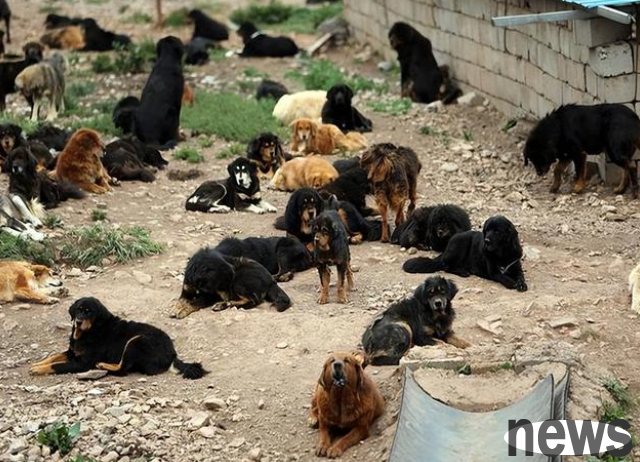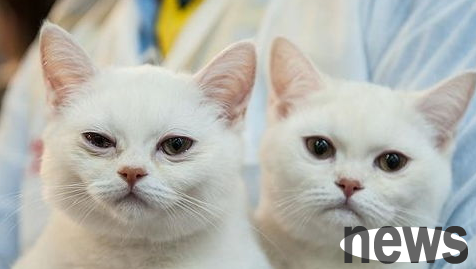The "national treasure" turned out to be a Ponzi scheme. Thousands of Tibetan Mastiffs in Qinghai became stray dogs and residents were afraid to go out.
In the 1980s, there was a Taiwanese TV series "Last Night's Star" that became extremely popular in the Mainland. The actor Zhang Peihua was particularly fond of Tibetan mastiffs. In 1983, he spent US$25,000 to buy back a Tibetan mastiff named Jiao Ke from the United States.

"This is equivalent to the salary of one of my movies. This amount of money could buy a house in Taiwan at that time." Zhang Peihua said.
This incident caused quite a stir in Taiwan at the time. Since Zhang Peihua also has considerable influence in the mainland, many mainlanders have discovered the commercial value of Tibetan Mastiffs for the first time.
In 1985, Wang Zhankui, the owner of a dog farm in Gongyi, Henan, began raising Tibetan mastiffs. He is considered the first person to raise Tibetan mastiffs in the mainland, and is also known as the "Father of Chinese Tibetan Mastiffs." At that time, one of his Tibetan mastiffs could be sold for 7,000 yuan.
On September 4, 1998, Dahe Newspaper published a report about Wang Zhankui - "Searching for Tibetan Mastiffs for Thousands of Miles, Hearing the Roar in the Central Plains". The report described Tibetan Mastiffs as endangered animals and Wang Zhankui as a warrior who saved Tibetan Mastiffs.
Immediately afterwards, other media also followed up with reports, and the image of the Tibetan Mastiff gradually began to become deified: it can remember the locations of hundreds of cattle when grazing, and has superior intelligence; it is born with supernatural powers and can fight wild wolves and snow leopards. In history, there were tens of thousands of Tibetan Mastiffs that swept across Europe with Genghis Khan's army.

The value of the Tibetan Mastiff that has ascended to the altar has also increased. In 1999, a Tibetan Mastiff could be sold for 200,000. This money could buy a house in Beijing at that time. People who want to make quick money "beat the drum and spread the flowers" and keep changing hands, further driving up the price of Tibetan mastiffs.
With the entry of Ma Junren, the head coach of China’s track and field Ma Jiajun, into the Tibetan mastiff industry, the price of Tibetan mastiffs has reached its peak. In 2005, a Tibetan mastiff named "Little Prince" raised by Ma Junren was worth 40 million yuan.
The high value makes raising Tibetan Mastiff a status symbol. At that time, taking a Tibetan Mastiff out was like driving a Mercedes or BMW on the street.
However, after 2012, the huge bubble surrounding Tibetan Mastiffs began to burst...
There are many examples in human history of using certain animals and plants as investment targets, but they are difficult to last. For example, in the "Tulip Bubble" in the Netherlands in the 17th century, some tulips were sold for 6,700 Dutch guilders each. At that price, you could also buy a mansion.
But the tulip bubble burst soon, and the prices of some varieties even fell to the same price as onions.
Marx said: "Gold and silver are naturally not money, but money is naturally gold and silver." Silver, gold, and gemstones are naturally scarce, and their physical properties are stable and can be passed down for thousands of years. But animals and plants such as tulips and Tibetan mastiffs are different. They reproduce easily and are not scarce. They will age, wither, and die, and their investment value will easily shrink.
After 2012, people gradually discovered that Tibetan Mastiffs are not endangered animals at all, and they are not scarce at all. There are thousands of Tibetan Mastiff breeding bases across the country, and there are more than 30 in Lhasa, Tibet alone. Each family has anywhere from nearly a hundred to as many as nearly a thousand Tibetan mastiffs.
In addition, the legend that Tibetan Mastiffs have superior intelligence and can remember the locations of hundreds of cows seems inconsistent with reality. In life, Tibetan mastiffs seem to only remember their owners and are very aggressive towards other people. News of Tibetan mastiffs hurting people are common across the country. The Tibetan Mastiff is the owner's bodyguard, and the owner must be the bodyguard of neighbors and passers-by.
Even the myth of the Tibetan Mastiff's bravery and invincibility is being subverted: there is no record in historical data of the Mongolian army bringing tens of thousands of Tibetan Mastiffs to fight in Europe. The Mongolian army would only bring a small number of Mongolian mastiffs with them for grazing when they marched. And including the Mongolian Mastiff, there are many dog breeds in the world that are better than the Tibetan Mastiff in size and strength.
As the myths were shattered one by one, and policies banning large dogs in cities were introduced one after another, funds began to withdraw, the Tibetan Mastiff bubble began to burst, and the value of the Tibetan Mastiff shrank significantly.

In 2010, the annual transaction volume of Qinghai Tibetan Mastiffs was more than 200 million yuan, but in 2015, it dropped to 50 million yuan. Two-thirds of Tibetan Mastiff breeding centers in Tibet were closed in 2015, and almost all of them were closed by 2020.
Many breeding centers can only sell Tibetan mastiffs to dog meat restaurants. However, because the meat of Tibetan mastiffs is fishy and smelly, dog meat restaurants are unwilling to take over even if the price is 300 yuan.
More Tibetan Mastiffs were abandoned by breeding centers and became stray dogs. Qinghai's Goluo Prefecture has a population of only 170,000, but there are 14,000 stray dogs living there, most of which are Tibetan mastiffs. Wandering Tibetan Mastiffs often attack passers-by, and local elderly, children, and women are basically afraid to go out alone.
These stray dogs are filthy and live on the leftovers in the garbage. They are as skinny as firewood and are often found dead in the wilderness. The plateau shepherd dog once lived a peaceful life. Now, due to the fanaticism of capital and the vanity of people, it can only be miserable.




